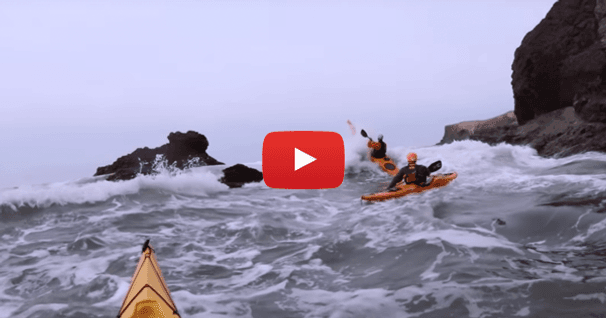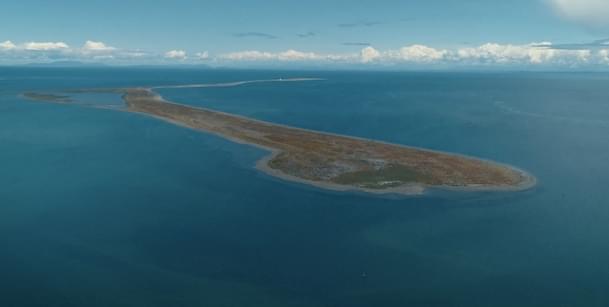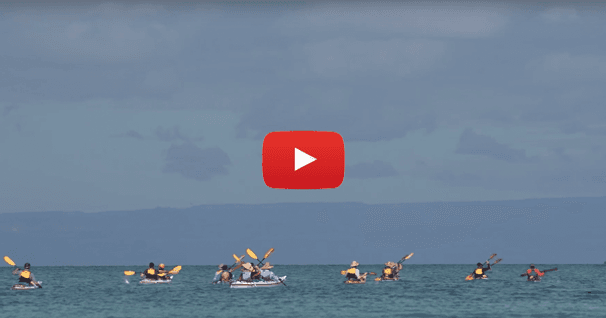Top 11 Kayaking Tips from 2018
Whether you were new to paddling in 2018 or you're an experienced paddler, you can never stop learning. Every time you go on the water you are learning better techniques and becoming more comfortable with your craft. Here are the top 11 tips that the Kayak Hipster learned this year on the water. What have you learned this year?
---
We’re closing out the year, so here's my top 11 tips of 2018.
A couple of these tips are new things I picked up this year, that I'm going to be working on moving forward, and then a couple are oldies but goodies. They actually came up this year, so I wanted to bring them up again.
DRESS FOR IMMERSION
The first one, and I don't think I'm going to get tired of saying this one, is dressing for immersion. Making sure people around you that are going to be paddling with you also dress for immersion. Also, if you're going to be out in colder conditions, always bring a dry change of clothes – hopefully in a size slightly larger so that other people can use it in the case of an emergency. We actually had a couple of cases this year of paddlers that were not dressed appropriately, it was a great thing that others in the group had not only extra clothes to share but also tying this into the second tip, which is also extremely important in cold weather, to have hot liquids with you.
50 years of lightweight, maneuverable, high-performing kayaks.
Check out this interview with Tom Keane, Eddyline Kayaks Co-Owner, on their journey!
BRING HOT DRINKS
Hot tea, hot cocoa, hot coffee can make a huge difference, even hot soup. It can be of great help when trying to warm someone up. There were a couple of times we were out surfing in colder water and I was upside down quite a bit. During our breaks on the beach with wind, it was always really nice to have something warm to drink to warm up. And for the dreary cold days that we spent in Maine and being warm thanks to hot tea made a huge difference in mood going back into the water when we knew it was going to be rainy and cold the rest of the day.
One more thing to add to hot beverages, most people use some kind of thermos but what my friend Felix always does which a couple of other buddies have done is he'll put a neoprene sleeve on his thermos. That helps the thermos as well. Another thing to add, I almost always use an IKEA bag to take some of the bulkier items to the kayak and then I can shove that IKEA bag right into a hatch and then place the thermos on top. I also like having the IKEA bag keep things from sliding around in the hatch – but I think having the thermos not directly touching the hull and therefore the cold water helps in keeping liquids warm as well as keeping those batteries that will drain fast in cold weather, maybe having a bit of padding so they’re not directly touching.
FINDING SAFE LOCATIONS
Number three I picked up during my time at a San Francisco & Mendocino with fantastic group of coaches, and that is if you're going to be launching and landing in surf, or playing in areas with rough water, or near rocks, the last thing you want is for a bigger set to come through and for you not to know how that area is going to behave. So, hanging out in a safe location, waiting for the bigger sets. What are they doing? Is it really safe for you to go in there and play? Same thing with launching, same thing with landing. I learned a lot of lessons with launching and landing this year, and all of them were tied to having patience and watching those sets.
PACK IN A CARRY-ON
Number four, when traveling overseas for outdoor adventures – especially in sports like kayaking or other outdoor activities that have a lot of equipment that has to be fitted to you specifically, try to take as much as you can actually with you on your carry-ons or in your day bags. A lot of times bags will not make it to the destination, and almost always we are very short on time from the moment you land to when the adventure starts. If you have something specific for you and it doesn't get there on time it just makes things a lot harder. For me, my dry suit, layers I wear underneath, I like the way my PFD is set up to carry all my camera gear, etc. Then the things that can be replaced at a moment's notice like a sleeping bag, or a tent, or even a skirt, that's not as big a deal as the main stuff that I wanted with me. So that I try to carry with me every time.
FEATHER STICKS - FIRE
The next two tips are campfire related. The first one I don't remember if I picked this one up on our trip to Norway or on a bushcraft video, or one of the books I've been reading, but the idea is to make what is known as feather sticks. They go by other names too. Now, I tried doing this here on a 2x4 just to show you and it just doesn't work as well. Imagine these were much, much longer shavings. These catch a lot faster and then it makes it a little easier for the flames to then make the bigger pieces of wood catch. I know everyone has a different style to get their fires started. I have found that this has been helpful when trying to get the bigger pieces going, especially if they’re wet, or to catch a little bit better. You don't have to cut them all and then try to pile them on. The shavings themselves, you can interlock them, and they’ll create that space for the flames to make their way through as well as lots of air for the fire to breathe.
LNT FIRES (LEAVE NO TRACE)
The sixth one I definitely picked up in Norway. it was really cool to see how both Kristoffer and Matt are very big advocates of Leaving No Trace behind. If the areas where you're landing or where you're camping or where maybe you're having your fire happens to be nice, big flat rock, not to make the fire right on the rock. We would gather lots of little rocks, make a bit of a basket to hold that fire and all of the firewood, and then when the fire was done we dispersed those rocks. Two things that can happen is: one, with a fire just flat on the rock there's a very good chance you will leave a trace – that fire will leave a mark on the rock. Number two: because of the temperature change between the fire, or if it's a really cold night it could potentially create a crack in the rock. Since we're not leaving trash behind, let's not damage what's already there, no harm done to that particular location.
DOUBLE CHECKING YOUR BOAT
Number seven, Ben, our coach in Maine, with the tip of addressing issues before they became bigger issues later down the line. For example, fixing a skeg, fixing a rudder before you go out paddling in high winds, or making sure our first aid kit is there, or our VHF radio is charged. The idea of addressing those things now where it might just take a couple of minutes, rather than becoming bigger issues later down the line.
TAKE LITTLE STROKES WHILE SURFING
This next one is from Jeff out in Mendocino, which was taking little strokes to get on a wave when surfing. Taking big powerful strokes was moving my kayak around side to side, and the moment that a wave was able to catch an edge, whoop! it would turn me right around. Lots of little strokes just to gather speed, stay straight, and then I'm in control of where I want to go next, and when I want to turn from side to side. This is another tip that I'm definitely going to continue using moving forward.
KNOW YOUR STROKE
The next two are also from Maine. This one from Ben as well, which was a really great nugget. He had us check how many strokes it took us to go from nothing to cruising speed, then from cruising speed to sprinting, and then he related it to other instances where it would be good for us to know that knowledge. If I know how many strokes it takes me to go from barely moving to sprinting, that helps me plan how far in advance I need to start paddling to get going to catch a wave. How often do we try to get on a wave and the wave goes by because we didn't pick up enough speed? That's usually because we didn't start paddling early enough. However, if you know that it takes you a certain amount of strokes to really get to that speed, you know you better start paddling earlier than you think to catch that wave. It was really cool how that tip could actually be used in so many different scenarios, so thank you Ben for that one!
FACE YOUR WORK
This one was also in Maine, and this one was from Todd. This is another example of why symposiums or other gatherings of lots of instructors are so great because you never know the nuggets of information you're going to walk away with. The first day we were supposed to go out and play in rough water, but it was beautiful, it was calm. An exercise Todd had us work on was, let's say I'm going to do a side slip, or a stern rudder, or even a sculling draw, you're supposed to rotate to face your work every time so that you keep that strong pad or box in front of you. Now, this is what I've always done, and I'm sure lots of other paddlers do the same thing. If I'm going to rotate to the right, I usually push with that right foot on the right peg, so that I try to push as much as I can, rotate, face my work. Todd had us play with pushing with the opposite foot instead. That opens up the hip that you're going to be using and it lets you rotate even further. The first couple of times I tried it, it didn't really make sense and I didn't see it working, and all of a sudden later in the day when I kept trying, all of a sudden I could unlock my hip and then rotate even further. I realized how it let me face what I was doing. So this is something that I'm definitely going to look into and I'm going to try to see how I can incorporate it and use it to my advantage moving forward. Take a look and see if that works for you. So Thank you Todd, that was a fantastic tip
PRACTICE WITH YOUR EYES CLOSED
So this last tip I recorded a couple of days after I finished recording the Maine video, but I really wanted to add it. It was from our time up at the West Isles Symposium in New Brunswick. We were playing in currents, ferrying across, going from an eddy out into the current, turning around, coming back in, going into the current, rolling, coming back up and seeing how far down the current would push you. One of the tips Chris had for us was trying to do some of those exercises with your eyes closed. It's incredible how much more information you get by closing your eyes and really paying attention to what the kayak and the water is doing by feel only. A lot of times, with our eyes open, we focus so much on what's happening around us that we're not actually paying attention to a lot of those little minor details. It was very cool to see that I was actually more successful doing some of those exercises with my eyes closed than open, because I was paying attention to what the water was doing to my kayak. Another cool thing that happened was I was able to tell what direction I was pointing at just by feeling the Sun on my face.
I hope that was helpful. This has been a fantastic year. I learned so much. I hope that I can continue to share as much knowledge as I can. Actually, I will have a big announcement coming up in the next couple of weeks of how I'm going to be trying to expand this channel, so keep an eye out for that. Thank you so much for your support. Subscribe if you'd like, I'm always trying to put these videos out, and as always, Luke Rovner for Kayak Hipster, thank you for watching and see you next time.
Related Articles
When a situation occurs while paddling in a group, conditions don't stop. Learn some pointers on how to…
Dungeness Spit from above, with the New Dungeness Lighthouse in the distance Dungeness…
Whenever you're paddling, there's safety in numbers and so it's generally not a good idea to paddle…
River obstacles are serious hazards on any waterway - from placid, slow-moving streams to raging,…




